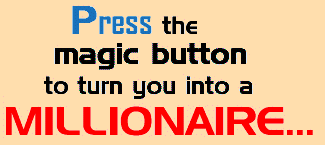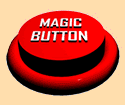TALKING ELECTRONICS
Interactive
Discussion-7
1
2
3
4
5
6
7
8
9
10
11
12
13
MAKE A MILLION!!
 It's
everywhere. I get bombarded every day with offers to become a
millionaire, simply by signing up for this scheme or that
Multi-Level-Marketing opportunity.
It's
everywhere. I get bombarded every day with offers to become a
millionaire, simply by signing up for this scheme or that
Multi-Level-Marketing opportunity.
It's on the internet and it's cramming my letterbox. Over 50% of the e-mails I get are from "get-rich-quick" schemes. They are all the same. They
play on the greed of people - their dreams and gullibility.
Some are cleverly disguised - offering royalties, payments and
commissions on other people's purchases.
They all look too good to be true. And they are too good.
Don't fall for any quick-fix to wealth. It just doesn't happen.
The only way to see a positive return is to have a job,
business or career in an area where you enjoy your activity EVERY DAY.
If you like electronics and understand its concepts, you are on-course for employment and enjoyment
- for your entire life.


No-one can guarantee you will be a millionaire, but if you work in a field that you enjoy, the chances of promotion are high and the monetary return will be very rewarding.
All our aims on this site are geared towards teaching you electronics from the ground-up.
Some people have commented that the site is too simple. But we are committed to thorough training and the only way to do this is to cover everything in full detail - from the ground up.
We are doing our part and the only thing we ask is to consolidate your understanding by carrying out the practical side.
Some constructors are doing this.
They are buying the complete range of kits in the programming series. If the experiments are carried out for each project, you cannot help but get an understanding of programming.
Many of the requests we receive, for assistance with programming, can be carried out on one of the projects we have already presented and by simply removing the unwanted components and writing the program, a new project can be created.
It's a lot of work, but if you enjoy what you are doing, the hours fly by.
Don't get tricked into "fly-by-night" schemes. Gain a skill in technology and you will have an "open sesame" to a career you will enjoy.
Some of the emails I get in my "in-box" refer to courses and schooling at well-respected colleges. I am not saying all these courses are "fraud" or "worthless" but you have to do a lot of investigation to find out if they offer the type of learning you need to enter the electronics field.
A lot of courses cover the "handling of staff" and "human interaction" and have little to do with electronics itself.
I have requested technical information from most of the large "universities" and "technical schools" and found that most courses are divergent from the type of material we are offering on this site.
Simply ask for course details and sample pages. If the material doesn't closely relate to the type of material we are presenting, you may be studying a lot of theory you will never use.
Ours is an immediately-relevant "hands-on" approach where you are learning at the fastest rate possible and at the least expense.
No-where will you get equivalent instruction for the same cost.
You can take it from an instructor who has been around more than 25 years and delivered more than 20,000 students to the work-force. My advice is simple.
Read everything we have on offer and construct as many projects as possible.
This will give you an understanding of the basics and enable you to proceed with courses from higher institutions.
Our instruction is only 10% the cost of any other course, so don't expect the same economy anywhere else. You will get a shock at the cost of some courses. You may think the cost relates to the expansiveness of the course, but this is not so. Most often the costs are swallowed up in administration. Many courses are out of date and do not offer the practical side of things. Find out if the course provides projects similar to our PIC projects. You need to assemble "real" projects, not only to improve your assembly skills but also to get an idea of how a project is laid out. These projects should also provide experimental features to re-enforce your understanding of the fundamentals. Any course less than this is not a value investment.
Our course will provide you with the information needed to start you in the right direction for project-designing and programming. In other words, the right direction for applying for a job or career.
We have proven our success with the feedback from readers who have landed the exact job they were expecting.
It is never too early to start with our "hands-on" approach.
Each project introduces new terns and building blocks.
But simply reading a few pages and putting a few projects together does not constitute a background for being employed.
If you said you had read Talking Electronics projects for 5 years and built 30 projects, you would be in the running for consideration.
Then, by simply taking a few of these projects to an interview, your changes of success would be 50 times greater than anyone else making an application. Every constructor who has followed our advice has been successful on either the first, second or third appointment. Once you have secured your employment, you can consider investing in one of the expensive "college-courses."
These can be done part-time or by correspondence. They will certainly "add-weight" to your knowledge and cover things we have not touched on.
The first thing you will notice is the heavy leaning towards mathematics. I have avoided this approach for two reasons. Firstly it creates a lot of frustration and secondly, I have found it can be circumvented with a little extra experimentation.
"Electronics students" are not always "mathematical students" and you can still achieve enormous success if you understand the "electronics side" of the task.
If you are not strong in mathematics, you should find out how the course is structured, before outlaying a deposit.
Other than making you aware of the costs and requirements of a "normal" course, I can do no more than say that our course is by far the cheapest and most successful in getting you started.
A NEW CONCEPT
The concept of taking information from a website is new to most readers.
Unfortunately it has not yet taken off.
Most readers like the feeling of having the printed page in their hands.
The tangible nature of a book is a comforting feeling.
It's indisputable. Paper is the most efficient way to get ideas across. You can peruse a 400 page book in a matter of seconds and work out if the writer is delivering the information you are looking for.
A page can provide a lot of information and it can be absorbed very quickly. We have become used to getting information from the "page" and it is a very convenient medium.
But when it comes to a technical subject such as the one we are presenting on this website, there are a number of other elements that have to be taken into account.
Since most of the information is new, it has to be proof-read and checked by constructors other than the author. By presenting it on the web, it can be read by many readers and double-checked for accuracy.
That's where the website is such a boon.
Articles can be put on the site as soon as they are written and constructed by readers for accuracy.
Faults can be rectified and the article is ready for publishing.
The books we will be producing will have 400 pages of content and each will use up an enormous amount of material from the website.
In the meantime, the intermediate step is to put the articles on a CD. This allows readers to view them on their computer without the slowness of downloading each page.
The CD of the site (and the content of our future books) is on the CD we are promoting on the index page and the layout follows the frames you are now viewing.
The CD is constantly being updated and anyone with one more than 4 months old will be impressed with the amount of new material on the current version.
It's a gradual process, but it's the way of the future. The power, convenience and world-wide accessibility of the internet makes it the ideal medium for education.
This is not the first time the author has been ahead of the times.
Thirty years ago, when he was teaching, he had revolutionary ideas and this led him to produce a magazine, where he could contact thousands of students instead of a class of 40.
The ideas in the magazine were revolutionary and included putting printed circuit boards on the cover. This was an enormous success and doubled the construction-market.
Now we come to the website, where the projects are backed up by the availability of kits, CD and eventually a 400 page book. Again, many of the concepts of the site are completely new. The thrust is to teach electronics in a completely different way - the way you will encounter it when carrying out an apprentice-ship, for example.
All you have to do is move in the direction we are suggesting and build some of the projects.
You cannot expect to learn a lot by merely reading. The finer points are picked up when you put something together and get it to work. Getting a project to work is probably only 2% of the knowledge of a subject. But it's the most important 2%.
It's the skill of being able to fix something, that this site is all about.
If you are not comfortable reading pages on a computer screen, they can be put into a program such as Word and printed via your printer.
At the moment you will need more than a ream of paper to print the entire site, but if you chose only the pages you want to review, your costs will be kept to a minimum and when the first book in the series is ready, we will let you know.
Until that time, take full advantage of the features of the web and view some of the projects we have designed.
For now,
Colin Mitchell